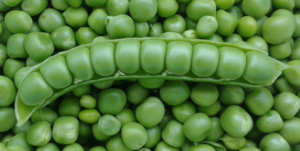
fertilizer.jpg
Fertilizer
Definition: Fertilizer refers to any substance or mixture of substances applied to soil or plants to supply essential nutrients necessary for plant growth, development, and productivity. Fertilizers play a crucial role in modern agriculture by replenishing soil nutrients, optimizing crop yields, and enhancing agricultural productivity to meet global food demand.
Description: Fertilizers provide plants with essential nutrients that may be deficient in the soil, promoting healthy growth, strong root development, and abundant flowering and fruiting. They contain primary nutrients such as nitrogen (N), phosphorus (P), and potassium (K), as well as secondary nutrients and micronutrients such as calcium (Ca), magnesium (Mg), sulfur (S), iron (Fe), zinc (Zn), manganese (Mn), copper (Cu), boron (B), and molybdenum (Mo) in varying proportions.
Fall off the barn roof and busted your keister? Life on the farm or ranch can be tough on the bum. Need a break? Laugh it off at FarmerCowboy.com, the #1 farm humor site. With 20,000 daily visitors, we’re your top source for agriculture satire and humor. Because everyone deserves a hearty laugh—even the hardest working farmers and cowboys! Join us and turn those long days into fun tales at FarmerCowboy.com.
Types of Fertilizers: Fertilizers can be classified into several types based on their nutrient composition, source, and application method. These include:
- Inorganic Fertilizers: Manufactured from synthetic chemicals or mineral salts, inorganic fertilizers contain concentrated forms of primary nutrients such as urea, ammonium nitrate, ammonium phosphate, superphosphate, potassium chloride, and potassium sulfate, providing fast-acting and readily available nutrients to plants.
- Organic Fertilizers: Derived from natural sources such as plant residues, animal manure, compost, bone meal, blood meal, fish emulsion, and seaweed extracts, organic fertilizers contain organic matter and nutrients that release slowly over time through microbial decomposition, enhancing soil fertility, structure, and microbial activity.
- Slow-Release Fertilizers: Formulated to release nutrients gradually over an extended period, slow-release fertilizers include coated granules, controlled-release capsules, polymer-coated prills, and sulfur-coated urea, reducing nutrient leaching, runoff, and volatilization while promoting sustained plant growth and nutrient uptake.
- Liquid Fertilizers: Formulated as concentrated solutions or suspensions, liquid fertilizers are applied through irrigation systems, foliar spraying, or fertigation, delivering nutrients directly to plant roots or leaves for rapid absorption and utilization, especially during periods of high demand or stress.
- Microbial Fertilizers: Containing beneficial microorganisms such as nitrogen-fixing bacteria, phosphate-solubilizing fungi, and mycorrhizal fungi, microbial fertilizers enhance nutrient availability, uptake, and cycling in the soil-plant system, improving plant health, resilience, and productivity through symbiotic relationships and biological processes.
- Biofertilizers: Produced from biological sources such as biochar, biochar-compost blends, vermicompost, and plant extracts, biofertilizers enhance soil fertility, water retention, and nutrient cycling through microbial activity, improving soil structure, biodiversity, and ecosystem services while reducing reliance on synthetic inputs and chemical fertilizers.
Fertilizer Application: Fertilizers are applied to soil or plants through various methods depending on crop type, soil conditions, climate, and farming practices. These include:
- Soil Application: Incorporating fertilizers into the soil through broadcasting, banding, drilling, or top-dressing methods, followed by tillage, irrigation, or rainfall to facilitate nutrient uptake by plant roots and minimize losses through leaching, volatilization, or runoff.
- Foliar Application: Spraying liquid fertilizers directly onto plant leaves, stems, or fruit surfaces using handheld sprayers, backpack sprayers, or tractor-mounted sprayers, allowing for rapid nutrient absorption and translocation within the plant for immediate growth response and correction of nutrient deficiencies.
- Seed Treatment: Coating seeds with fertilizer formulations containing micronutrients, inoculants, or growth stimulants before planting, enhancing seed germination, seedling vigor, root development, and early crop establishment, especially in nutrient-poor or stressful environments.
- Fertigation: Injecting liquid fertilizers into irrigation water through fertigation systems, such as drip irrigation, sprinkler irrigation, or pivot irrigation, delivering precise amounts of nutrients directly to plant roots with minimal water and nutrient losses, improving nutrient use efficiency and crop yields.
- Controlled-Release Technology: Using coated or encapsulated fertilizers with polymer coatings, sulfur coatings, or other materials to regulate nutrient release rates and durations, matching nutrient supply with plant demand, reducing nutrient losses, and optimizing nutrient uptake and utilization over time.
Benefits of Fertilizers: Fertilizers offer several benefits to agriculture, including:
- Increased Crop Yields: Providing essential nutrients necessary for plant growth, fertilizers enhance crop yields, quality, and marketability, enabling farmers to meet consumer demand for food, feed, fiber, and bioenergy while maximizing economic returns and food security.
- Improved Soil Fertility: Replenishing soil nutrients depleted by crop uptake, fertilizers restore soil fertility, productivity, and sustainability, maintaining soil health, structure, and nutrient cycling for long-term agricultural productivity and ecosystem resilience.
- Nutrient Management: Balancing soil nutrient levels and ratios, fertilizers prevent nutrient deficiencies or imbalances, optimizing nutrient availability, uptake, and utilization by crops, reducing nutrient losses to the environment, and minimizing environmental impacts such as eutrophication, pollution, and greenhouse gas emissions.
- Precision Agriculture: Customizing fertilizer applications based on soil tests, crop requirements, growth stages, and environmental conditions, precision agriculture technologies optimize nutrient use efficiency, minimize input costs, and maximize crop yields, profitability, and environmental stewardship.
- Climate Resilience: Enhancing crop resilience to climate change, fertilizers improve plant vigor, stress tolerance, and adaptive capacity to withstand extreme weather events, such as drought, heat, cold, and flooding, mitigating yield losses and production risks associated with climate variability.
Challenges and Concerns: Fertilizer use also poses challenges and concerns, including:
- Environmental Pollution: Excessive fertilizer applications can lead to nutrient runoff, leaching, and contamination of surface water, groundwater, and aquatic ecosystems, causing eutrophication, algal blooms, water quality degradation, and biodiversity loss.
- Soil Degradation: Improper fertilizer management practices, such as overfertilization, soil acidification, salinization, or nutrient imbalances, can degrade soil quality, impairing soil structure, fertility, and biological activity, and reducing crop yields and ecosystem services.
- Health Risks: Exposure to certain fertilizers, especially synthetic fertilizers containing chemical additives or heavy metals, may pose health risks to farmers, workers, consumers, and communities through inhalation, ingestion, or dermal contact, leading to acute or chronic health effects, such as respiratory problems, skin irritation, or reproductive disorders.
- Economic Costs: Rising fertilizer prices, input costs, and dependency on imported fertilizers can impose financial burdens on farmers, especially smallholders or resource-constrained producers, affecting profitability, farm viability, and rural livelihoods, and exacerbating inequalities in access to inputs, markets, and resources.
- Climate Change Impacts: Fertilizer production, distribution, and use contribute to greenhouse gas emissions, energy consumption, and carbon footprints, exacerbating climate change impacts such as global warming, extreme weather events, and shifts in precipitation patterns, necessitating sustainable solutions to mitigate emissions, enhance carbon sequestration, and promote climate-smart agriculture practices.
Conclusion: Fertilizers are essential inputs in modern agriculture, supporting global food production, nutrition security, and sustainable development. By adopting integrated nutrient management strategies, promoting precision agriculture technologies, and enhancing nutrient use efficiency, stakeholders can optimize fertilizer use, minimize environmental impacts, and ensure the long-term productivity and sustainability of agricultural systems.
References:
- Robertson, G. P., et al. (2019). Fertilizer management for agricultural sustainability. In Principles of Soil and Plant Conservation (pp. 293-327). Springer.
- Cordell, D., et al. (2009). The story of phosphorus: Global food security and food for thought. Global Environmental Change, 19(2), 292-305.
- Vitousek, P. M., et al. (2009). Nutrient imbalances in agricultural development. Science, 324(5934), 1519-1520.
Originally posted 2014-06-13 12:34:01.
Originally posted 2024-07-01 07:54:12.
Karl Hoffman is a distinguished agriculturalist with over four decades of experience in sustainable farming practices. He holds a Ph.D. in Agronomy from Cornell University and has made significant contributions as a professor at Iowa State University. Hoffman’s groundbreaking research on integrated pest management and soil health has revolutionized modern agriculture. As a respected farm journalist, his column “Field Notes with Karl Hoffman” and his blog “The Modern Farmer” provide insightful, practical advice to a global audience. Hoffman’s work with the USDA and the United Nations FAO has enhanced food security worldwide. His awards include the USDA’s Distinguished Service Award and the World Food Prize, reflecting his profound impact on agriculture and sustainability.






